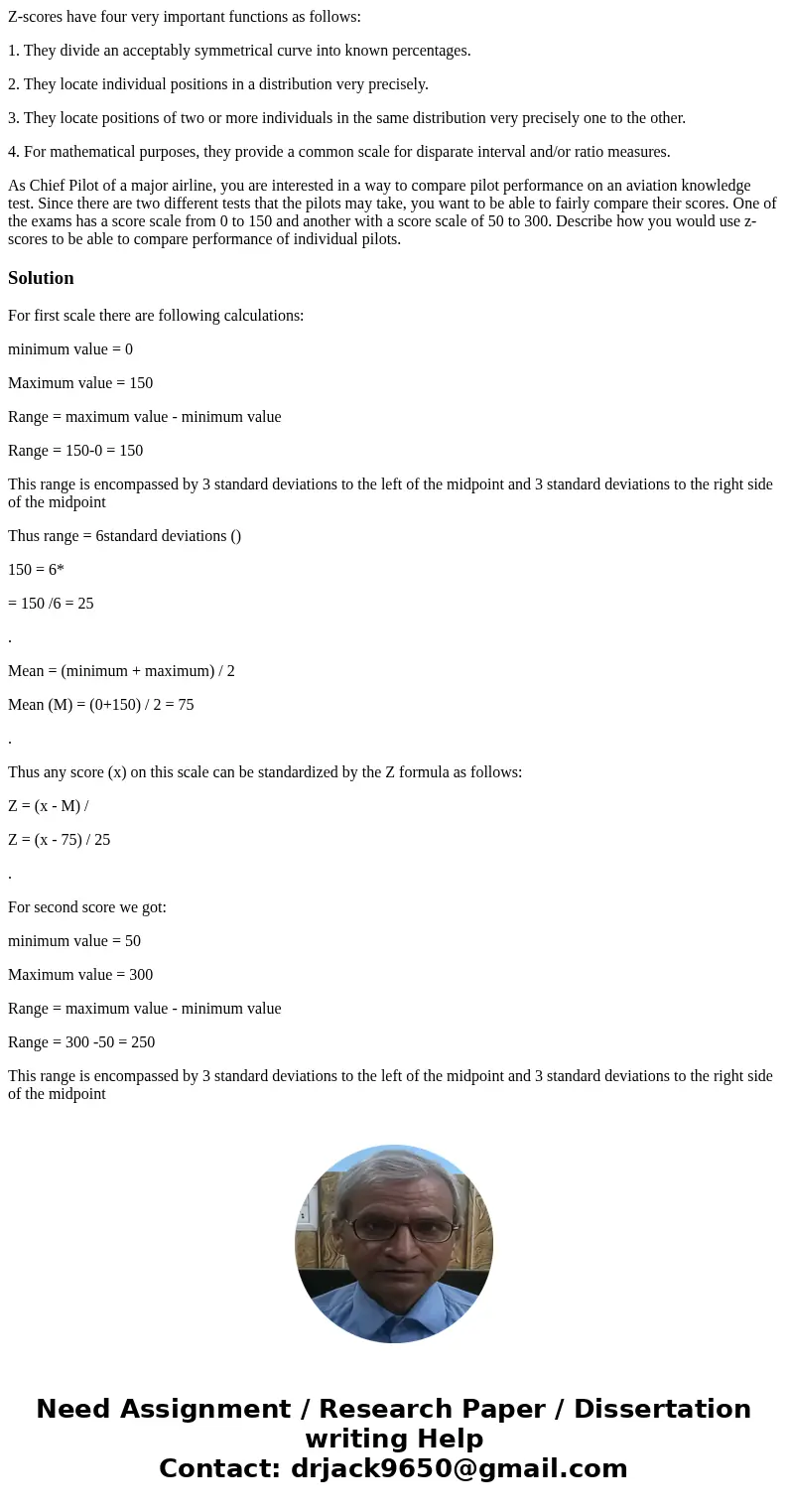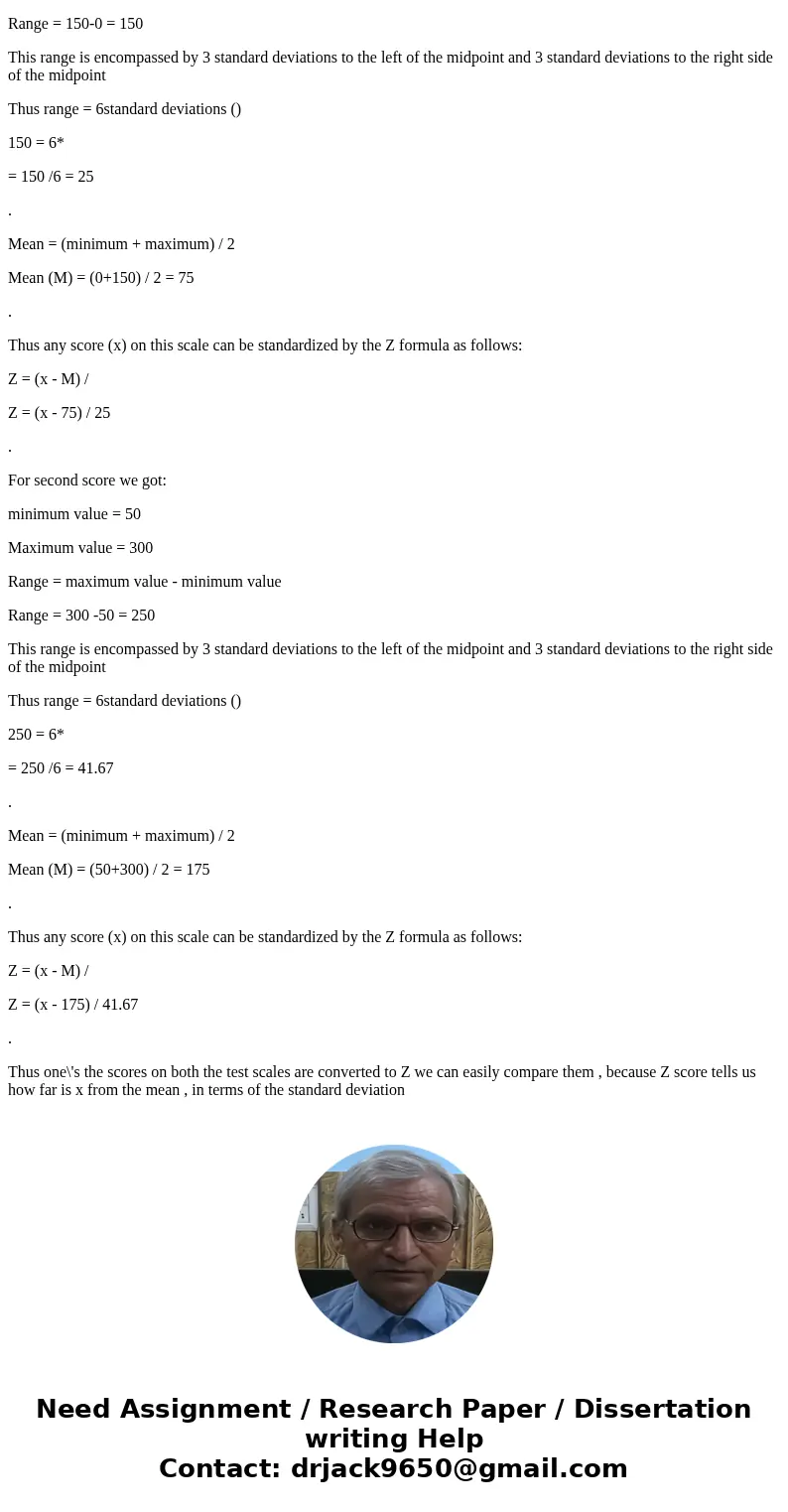Zscores have four very important functions as follows 1 They
Z-scores have four very important functions as follows:
1. They divide an acceptably symmetrical curve into known percentages.
2. They locate individual positions in a distribution very precisely.
3. They locate positions of two or more individuals in the same distribution very precisely one to the other.
4. For mathematical purposes, they provide a common scale for disparate interval and/or ratio measures.
As Chief Pilot of a major airline, you are interested in a way to compare pilot performance on an aviation knowledge test. Since there are two different tests that the pilots may take, you want to be able to fairly compare their scores. One of the exams has a score scale from 0 to 150 and another with a score scale of 50 to 300. Describe how you would use z-scores to be able to compare performance of individual pilots.
Solution
For first scale there are following calculations:
minimum value = 0
Maximum value = 150
Range = maximum value - minimum value
Range = 150-0 = 150
This range is encompassed by 3 standard deviations to the left of the midpoint and 3 standard deviations to the right side of the midpoint
Thus range = 6standard deviations ()
150 = 6*
= 150 /6 = 25
.
Mean = (minimum + maximum) / 2
Mean (M) = (0+150) / 2 = 75
.
Thus any score (x) on this scale can be standardized by the Z formula as follows:
Z = (x - M) /
Z = (x - 75) / 25
.
For second score we got:
minimum value = 50
Maximum value = 300
Range = maximum value - minimum value
Range = 300 -50 = 250
This range is encompassed by 3 standard deviations to the left of the midpoint and 3 standard deviations to the right side of the midpoint
Thus range = 6standard deviations ()
250 = 6*
= 250 /6 = 41.67
.
Mean = (minimum + maximum) / 2
Mean (M) = (50+300) / 2 = 175
.
Thus any score (x) on this scale can be standardized by the Z formula as follows:
Z = (x - M) /
Z = (x - 175) / 41.67
.
Thus one\'s the scores on both the test scales are converted to Z we can easily compare them , because Z score tells us how far is x from the mean , in terms of the standard deviation


 Homework Sourse
Homework Sourse